Further musings
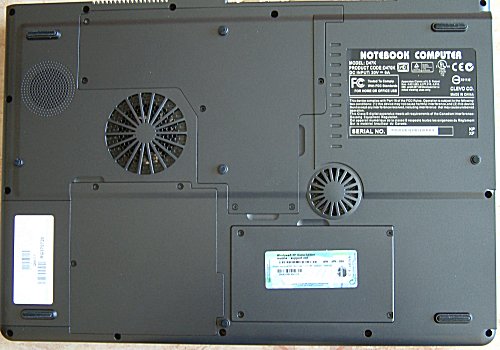
Flipping the unit over reveals the laptop's origins. The chassis is provided by Clevo, suppliers to a vast number of notebook integrators around the world. This particular model, D47K, is designed as a true desktop-replacement notebook. 17-inch screen, high-performance graphics card, and AMD's powerful Athlon 64 Mobile processors offer up tasty mains-operated performance. The chassis has three distinct sections that can be removed by taking away a number of small screws. The small central section is home to a 60GB 7,200RPM hard drive. Larger capacities can be chosen from Rock's configuration menu, but that would mean giving up the desktop-matching 7,200RPM rotational speed. I reckon Rock has the balancing act of capacity vs. speed just right here.
To the left of the hard drive housing is space for a battery pack. My concern with this 8-cell pack is limited battery life. Simple maths tells us that it equates to around 65WHr. That's meagre for such a powerful system. Compare this with, say, Dell's 96WHr batteries that are specified on 5160 and 9100 models. I'm adamant that Rock's hands are tied by what Clevo supplies, yet I feel that 65WHr simply isn't enough juice when stressed by a powerful CPU, large screen, and discrete video card. Something closer to 100WHr would be nice.
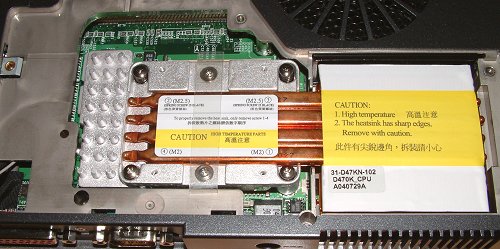
The largest section is reserved for the CPU, cooler and RAM. Similar to another Clevo-supplied chassis, this one uses a cooler with an integrated heatpipe. The fan, just above, blows cooler air over the heatpipe section. It's an elegant approach that's been forced on to ODMs by the ever-increasing wattage requirements of high-end CPUs.

Removing the cooler is just a matter of taking away four holding screws. If you haven't seen an Athlon 64 in the nude before, feast your eyes on a S754 3700+ model. Note just how large the core is in relation to Athlon XPs. This Model 3700+ clocks in at 2.4GHz and carries a healthy 1024kb L2 cache. S754 denotes that it has a single-channel memory controller that hooks up, in turn, to a VIA K8T800-based motherboard. Only a desktop AMD Athlon 64 FX-55 is faster in pure MHz terms, so this really is cutting-edge DTR stuff. It's also the first time that I've personally seen such a fast AMD CPU in notebook form, although its speed will be tempered by poor battery life. Absolutely no complaints about processor power here, though. 2D benchmark performance will be suitably impressive.
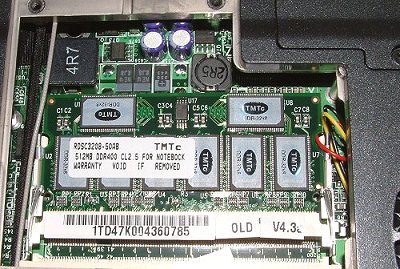
Looking just above the cooler shows a couple of DIMM slots. Each slot is capable of accommodating 1GB DDR400 SODIMMs. Our review model arrived specified with a single 512MB DDR400 SODIMM. That makes upgrading to 1GByte a doddle. Note that the presence of a second DIMM won't boost performance a great deal. The CPU runs off a single-channel controller, and that's the reason why S754 processors are generally slower than dual-channel S939s when assessed over a range of memory-dependant benchmarks.
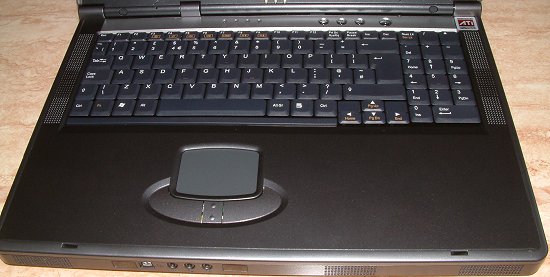
The generous laptop width afforded by having a 17-inch widescreen panel is reflected by the Quaddra 64 having a full-size keyboard complete with number keys on the right-hand side. Ergonomics are generally good. Keys have just the right amount of travel and bounce. A set of shortcut keys are handy.
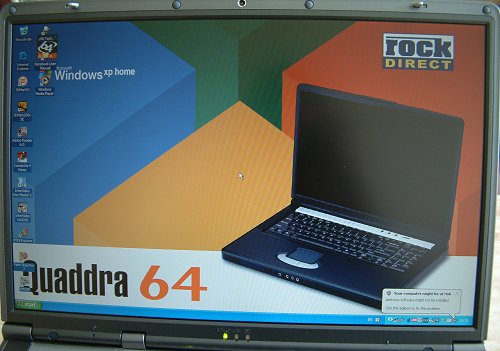
It's always difficult to assess the quality of a screen from a photograph. Rock's 17-inch WXGA panel runs at a native 1440x900, which is just about right for this size of screen. However, Rock's resolution is fixed on the Quaddra 64 range, so you cannot, for example, choose a higher resolution as an optional extra. The screen was bright, sharp, and had no dead pixels.

The laptop shipped with a basic leather bag, Ability Office, a low-cost alternative to Microsoft's range, and an excellent user manual that covered all areas in plain English. Windows XP Home SP2 was the operating system of choice, so no complaints on this count. A further re-installation CD, WinCinema, Panda Anti-Virus, and Webcam software completed the package. Rock also offers a comprehensive 3-year collect-and-return warranty that's in line with other U.K.-based notebook vendors. The beefy 120w charger pushes up travel weight to almost 5kg.
It's strange to note that Wireless connectivity isn't a standard feature on a £1400 laptop. There's also no Bluetooth as compensation, either. Having said that, the asking price and specification for this particular model is consistent amongst a number of big-name vendors, suggesting that all have a similar buying price from Clevo.









